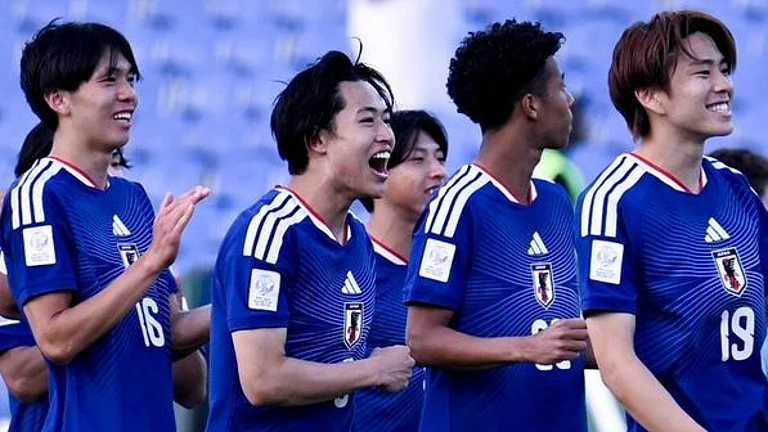Sita doesn’t need her Ram. He’s not her hero. She saved Ayodhya from bankruptcy by using just pumpkin seeds. Mahishasura was killed by upper-caste Aryans and not Goddess Chamundeshwari.
In Karnataka, alternative retelling of stories from the Ramayana and about Dussehra steers clear of the narratives promoted by mainstream Hindu nationalists. Sita, and not the victor of violent battles, Ram, takes centre-stage in one famous Ramayana version told across Karnataka’s villages. Narrated specifically from Sita’s perspective, this version features Ram as a relatively diminished character. This Sita is one who carries out her daily tasks, cooks for her loved ones, even as she questions: “I say this not with sadness or anger. One day, the throne you sit on will pierce you and to Mother Earth you will also return.” This is the essence of Sanntimmi’s Ramayana, a version told by a Dalit woman worker, created by Dalit writer, activist Du. Saraswati.
Sanntimmi (ironically means little girl) is a Kannadiga Dalit woman, who embodies women unbound by heroes. Her Ramayana version resonates with women like her, often overlooked by the government.
The stories are told in the form of plays. ‘Kahani sunau?’ Saraswathi asks the audience in Patna, her broken Hindi fettered by her strong South Indian accent.
The act begins with Sanntimmi seated on the floor. Before her is a plate of crushed jaggery and a towel. She narrates Sita’s story as she works, portraying her as an extraordinary woman with her own desires, thoughts and voice. “Rama sent Hanumanta, his follower, to find where Sita was, who found her captive in Lanka. Rama and his army of monkeys built a bridge across the sea; even a squirrel helped. They went, fought a battle, killed Ravana, burnt Lanka and brought Sita back,” she recounts. But who suffers, she asks? “Aurat,” the audience in Patna echoes. In Bengaluru, the audience responds with “Mahileyaru”.
The woman. It is always women who are raped and children sold into slavery, she laments. “Both Ram and Ravana were educated. Couldn’t they have resolved their differences peacefully, sparing women such agony?” she questions their intelligence quotient. Her anecdotes are a window into her community’s daily struggles: the quest for education, the battle against patriarchy’s constraints and the harsh realities women endure.
Saraswathi highlights how rulers historically laboured alongside ordinary people, in contrast with present officials who luxuriate in state legislatures, sometimes even unable to walk. Her words trigger laughter, but reveal the patriarchal hurdles faced by Dalit women, emphasising their limited opportunities for education.
Saraswathi passionately recounts Sita’s lack of agency in her marriage, reflecting the struggles of modern Indian women. In her rendition, Sita embraces her destiny without resentment, delving into the study of plants, bird languages and the love mirrored in sheltering trees. She focuses on self-care, occasionally encountering Rama, who frequently overlooks her desires. But she remains loyal, supporting him even in his absence.
Sita, in these retellings, becomes a symbol for the many hurdles faced by Dalit women. Her audiences hear stories that were previously unheard of, like how Sita saved Ayodhya from bankruptcy by making a dish using pumpkin seeds, which were all picked up from different villages.
The stories have been adapted into plays, which Saraswathi has performed across Karnataka. Some stories have also found their way into the syllabuses of some local colleges, like St. Joseph’s. In the end, Sanntimmi signs off without killing Sita. For the Dalit women in rural Karnataka, her Sita is not just a household name, but almost like a beloved family member.
In late October, the sun’s first rays illuminate Chamundeshwari Hills in Mysuru. Crowds gather to worship the Goddess Chamundeshwari, the Mysuru royal family’s patron deity and protector of the city visible below. Seated on a lion, wielding a trident, she embodies maternal strength and fierce protection. Legend has it that she vanquished Mahishasura on this very hill using her trident, which earned her the title ‘Mahishasuramardhini’ or the demon slayer. She is the revered deity of Mysuru, patronised by its Maharajas for centuries.
Dasara, spanning nine days (Navaratri) and climaxing with Vijaya Dashami, commemorates Mahishasura’s defeat. Celebrated at Chamundeshwari Temple, Mysuru, it’s distinct from the northern Dussehra. The festival centres around the mythological battle and the goddess’s triumph, marking a unique cultural tradition in the region.
Dasara has grown into a unifying state festival, bridging communities amid societal changes. Beyond palace traditions, it’s a city-wide celebration involving locals, drawing tourists with cultural showcases, including the gem-studded throne and Chamundeshwari’s elephant procession.
Parallel to the grand Dasara spectacle, there is a growing movement that reinterprets Mahishasura as a benevolent ruler, challenging the demonised narrative. Led by rationalists and Dalit groups since 2015, it asserts the latter’s cultural histories. Previous BJP governments opposed Mahishasura celebrations, fearing Hindu division. Yet, in a historic move, Udupi district in coastal Karnataka hosted the event amid BJP protests on October 15. Udupi, a Sangh Parivar stronghold, saw Mahishasura celebrations for the first time, marking a significant shift. Ambedkar Yuva Sene organised the event, with Congress leaders and activists participating in a symbolic procession at Ambedkar Bhavana in Udupi.
Those who retell this narrative emphasise Mahishasura’s identity as a compassionate Buddhist king and a tribal leader. They argue that portraying him as an asura (demon), especially by certain upper-caste groups like the Aryas, is a misinterpretation intended to discredit his legacy. Vittal Vaggan, a researcher from Kalaburagi, asserts Mahisha was an emperor and a historical figure. He protected the majority in the ‘Mahisha Mandala’ kingdom, which spanned India.
Such alternative takes on mythologies, like the ones starring Saraswathi’s Sita and the humanised Mahisha tend to mirror modern struggles and contemporary complexities, putting the spotlight on silenced narratives in today’s India.
(This appeared in the print as 'Contesting Narratives')


























